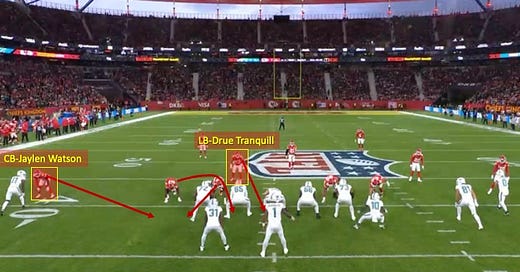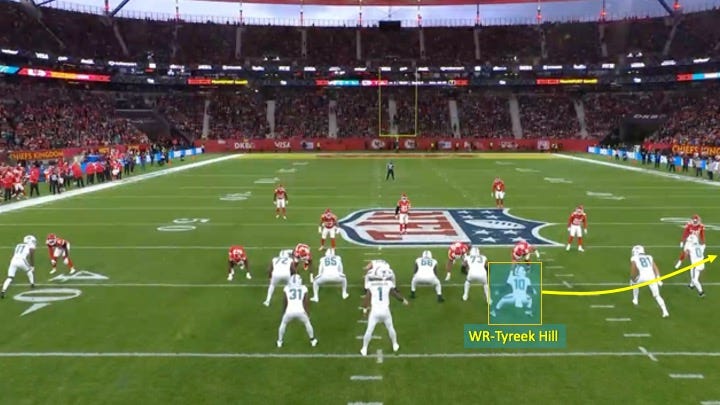The way the Dolphins use motion creates so many issues for defenses. It generates free releases for their speedy receivers. It creates spacing and larger passing windows. It keeps the defense from being able to easily communicate and adjust before the snap.
Overall, it makes defenses more predictable and reactive.
Chiefs defensive coordinator Steve Spagnuolo wasn’t having any of that on Sunday. And on more than one occasion, he was able to dictate to the Dolphins, using their motion against them. You could see this on Miami’s first 3rd down of the game, a 3rd-and-10.
One motion the Dolphins have really featured this season has been “burst” motion, which is where they align a receiver (often Tyreek Hill) tight to the formation, or even behind the tackle, and then he sprints to the outside right before the snap. Again, this gets someone like Hill a free release and makes it difficult for the defense to adjust since the motion is often right before the snap:
The good thing for the Chiefs is that this alignment and motion create certain tendencies, which Spagnuolo was clearly in tune with.
First, this was 3rd-and-10. I think it was pretty clear that Tyreek Hill was not aligning off tackle to stay in and block or chip. He was getting ready to motion outward to the perimeter. The Chiefs could see that pre-snap.
Second, because that motion happens right before the snap, the Chiefs could time their pressure and the breaking of their disguise off of the motion.
Third, I don’t know what the numbers are exactly, but from our film study I’d say the tendency for Tua to look first in the direction of the burst motion is very high. That meant he would likely not see any blitzers coming off the edge from his left, or at very least, he would be late to react.
So let’s take a look at how Spagnuolo and the Chiefs D attacked here.
First, notice the front. Chris Jones aligned to the field side (the side of the motion):




